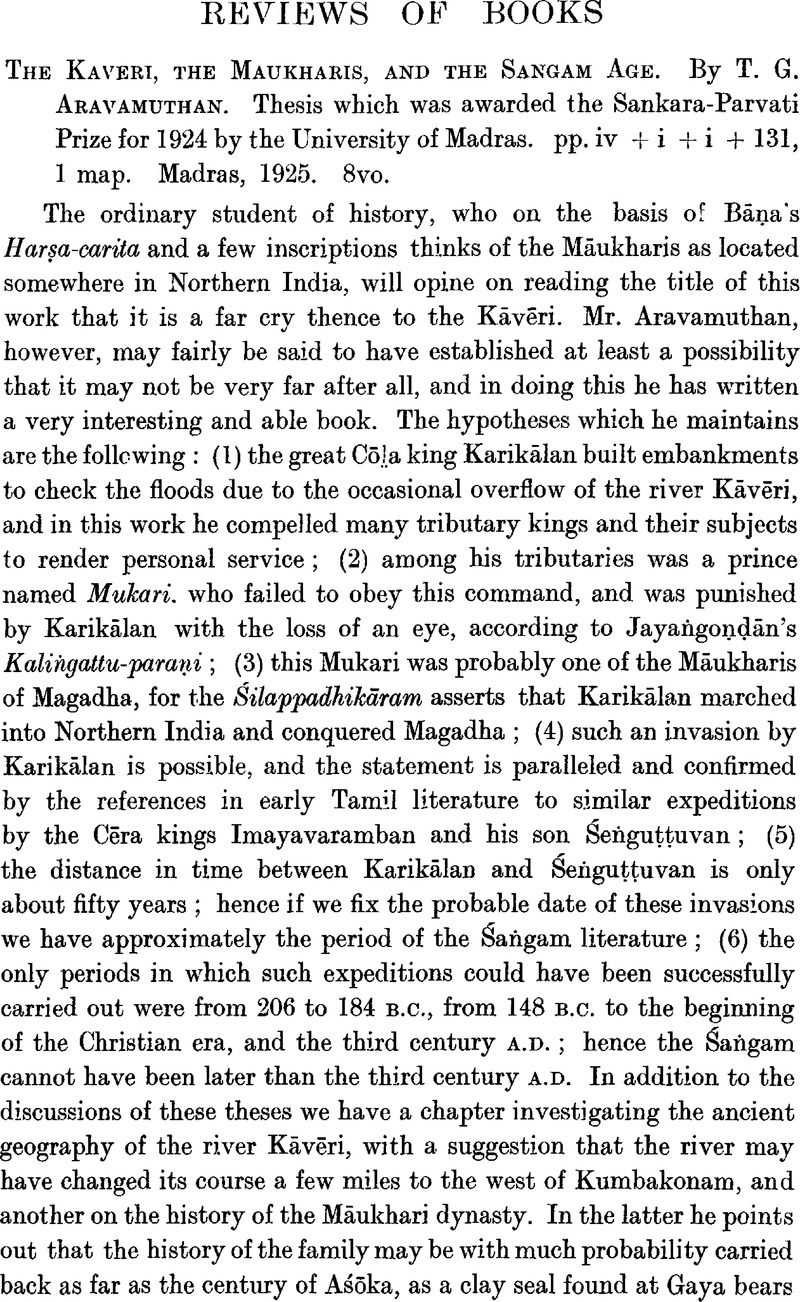No CrossRef data available.
Article contents
The Kaveri, The Maukharis, and the Sangam Age. By T. G. Aravamuthan. Thesis which was awarded the Sankara-Parvati Prize for 1924 by the University of Madras, pp. iv + i + i + 131, 1 map. Madras, 1925. 8vo.
Published online by Cambridge University Press: 24 December 2009
Abstract

- Type
- Reviews of Books
- Information
- Bulletin of the School of Oriental and African Studies , Volume 4 , Issue 1 , March 1926 , pp. 171 - 174
- Copyright
- Copyright © School of Oriental and African Studies 1926
References
page 173 note 1 Mr. Aravamuthan suggests two alternatives to meet this difficulty, spelling the name as Śatakarni: (1) that karni means “an arrow”, which is indicated by the use of the arrow as a symbol on coins of the dynasty, or (2) that it signifies a ship or steersmin, which if indicated by the figure of a fhip on some Āndhra ooins. But both these meanings seem rather artificial, and the second is most improbable in view of the fact, proved by Dr. Sukthankar, that the dynasty seems to have had its original home in the region of Bellary, and were thus landlubbers. Besides, the original spelling is not Śatakarni but Śātakarni.
page 174 note 1 The epic hero Karna was very popular, and is constantly cited as a type of princely generosity in inscriptions.




